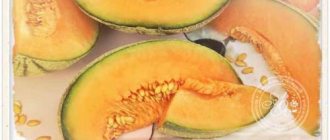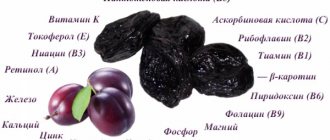Calories and nutritional value
Despite the sweet dessert taste of grapes, there are not so many calories in them - 43-70 kcal per 100 g. Their energy value varies depending on the color and variety. Industrial varieties, from which wine and juice are made, contain less pulp and more liquid, they are not as sweet as table varieties, and have less calories.
Calorie content of different types of grapes per 100 g of product:
- white grapes - 43 kcal;
- red grapes - 64 kcal;
- sour varieties - 65 kcal;
- green grapes - 69 kcal;
- black grapes - 70 kcal;
- Kishmish - 95 kcal.
Among technical varieties, calorie content also varies - for example, Riesling berries contain only 43 kcal per 100 g, and Muscat - 66 kcal.
Raisins contain a lot of calories, so dried sultanas already contain 270 kcal.
Table varieties contain on average 72 kcal per 100 g, and they are directly consumed as food.
Let's consider the nutritional value of this product - 100 g of table grapes contains:
- water - 80.5 g;
- carbohydrates - 15.4 g;
- dietary fiber - 1.6 g;
- organic acids - 0.8 g;
- proteins - 0.6 g;
- fats - 0.6 g;
- ash - 0.5 g.
Carbohydrates are represented mainly by glucose and fructose. Organic acids are represented by tartaric (most of all), gluconic, malic, citric, succinic, and oxalic acids. Among the amino acids there are many essential ones - arginine, valine, histidine, leucine, isoleucine, lysine, methionine, threonine and others. Among the non-essential amino acids, the most abundant are proline, glutamic and aspartic acids.
Consumption norms per day
According to research by the Institute of Nutrition of the Russian Academy of Medical Sciences, grapes contain hydroxycinnamic acids, flavanols and their glycosides, as well as gallic and para-hydroxybenzoic acids necessary for humans.
To meet the daily requirement for these substances, you need to eat 200-250 g of berries. You should not eat them together with the seeds - the body will not be able to absorb the nutrients they contain, but the risk of damaging the intestinal walls is high.
Reference. There are about 50 berries in 100 g of grapes.
Vitamins and minerals
100 grams of grape berries contain the following vitamins:
- C - 6 mg;
- E - 0.4 mg;
- RR - 0.3 mg;
- B6 - 0.09 mg;
- B5 - 0.06 mg;
- B1 - 0.05 mg;
- beta-carotene - 0.03 mg;
- B2 - 0.02 mg;
- A - 5 mcg;
- B9 - 4 mcg;
- H - 1.5 mcg.
Ampelotherapy (grape treatment) is used in some southern resorts. All varieties in a state of full ripeness and fresh juices from them can be used as such a medicine.
Minerals:
- potassium - 225 mg;
- calcium - 30 mg;
- sodium - 26 mg;
- phosphorus - 22 mg;
- magnesium—17 mg;
- silicon - 12 mg;
- sulfur - 7 mg;
- chlorine - 1 mg;
- iron - 600 mcg;
- aluminum - 380 mcg;
- boron - 365 mcg;
- rubidium - 100 mcg;
- manganese - 90 mcg;
- zinc - 90 mcg;
- copper - 80 mcg;
- nickel - 16 mcg;
- fluorine - 12 mcg;
- vanadium - 10 mcg;
- iodine - 8 mcg;
- molybdenum - 3 mcg;
- chromium - 3 mcg;
- cobalt - 2 mcg.
Proteins fats carbohydrates
100 gamma berries contain about 0.6 grams of protein. This is a low-fat product containing 0.2 grams of fat per 100 grams of grapes. Fat is represented mainly by essential oils. But you can’t call it low-carbohydrate - due to fructose and glucose, the same volume of deliciousness contains about 16.8 grams of carbohydrates.
What are the benefits of grapes?
Grapes perfectly strengthen the heart and blood vessels, improve blood circulation and hematopoiesis, lower cholesterol, which makes its constant consumption an excellent prevention of cardiovascular diseases. Strengthens the eye muscles and has a good effect on vision. It is nutritious and indicated for physical and mental stress. It prevents Alzheimer's disease, strengthens the nervous system, and helps get rid of headaches. Removes excess water, prevents the formation of kidney stones, increases appetite, promotes digestion and enhances metabolism.
Pectins present in red grapes remove radionuclides and toxins. The fruits of the grapevine have antioxidant and oncoprotective properties, and also have expectorant, diuretic and choleretic effects.
For men
Grapes have a number of beneficial qualities for men:
- improve potency;
- restore normal functioning of the genitourinary system;
- improve the quality and quantity of sperm;
- prevent the occurrence of prostate cancer;
- indicated for metabolic syndrome in men.
Metabolic syndrome in the stronger sex manifests itself in fat deposits on the thighs, high blood pressure and elevated sugar levels. Fast food lovers often suffer from it.
For women
Grapes will be useful for women for the following reasons:
- stabilizes the menstrual cycle, removes irritability during menstrual periods and softens premenstrual syndrome;
- carries out the prevention of breast cancer and other cancers;
- helps to survive menopause easier;
- improves skin condition.
These berries and the oil from their seeds are actively used for skin and hair care.
For children
It has long been noted that children who actively consume grapes grow well, gain weight, and are less irritable. These berries are good for children for many reasons:
- increase immunity;
- improve appetite and digestion;
- promote the formation and strengthening of bones;
- reduce the manifestations of caries;
- normalize the activity of the central nervous system;
- activate brain activity;
- increase strength and endurance.
It is very useful in the menu of a schoolchild experiencing mental and physical stress; it will help to overcome stress.
Do grapes make you better?
Despite all the beneficial qualities of grapes, many are ready to give up eating them due to the assumption that they cause weight gain.
American doctors conducted an experiment, as a result of which they discovered that green grapes, on the contrary, lead to weight loss. The same applies to the juice from this berry. 100 overweight people were selected for the study. The subjects were divided into 4 groups. People were asked to eat as usual and walk for half an hour every day. As a result, after a few months, all subjects lost weight. Consumers of undiluted grape juice lost the most weight, while those who did not consume grapes lost the least amount of weight. From this we can conclude that eating this berry promotes weight loss. There are even special grape diets aimed at removing waste and toxins from the body. Since grapes are quite high in calories, you can quickly fill up on them, which means that in order to suppress the feeling of hunger you need to eat very little. It turns out that you can only gain weight from grapes if you eat them in large quantities or with other foods that contribute to the accumulation of extra pounds.
Features of use
Many people are interested in whether pregnant women, small children, diabetics can eat grapes, and whether they can lose weight by eating these berries.
During pregnancy
Grapes contain many vitamins and minerals necessary for the formation of the fetus in pregnant women. They will be especially useful in the early stages, helping the expectant mother fight toxicosis and give her strength and energy. But you shouldn’t get too carried away with grapes, as they contain a lot of glucose and can contribute to the accumulation of excess weight in both the pregnant woman and the fetus. It is advisable to consume the product during its ripening season, preferably from the garden.
During breastfeeding, it is better to abstain from it for the first few months, as it promotes gas formation and can be a source of allergic reactions in infants.
When losing weight
These berries are low in calories and high in vitamins and minerals. It is best to use grapes for weight loss when they ripen en masse - in August or September. Its berries perfectly satisfy the feeling of hunger, give strength, improve metabolism, remove toxins and excess water. The skin of grapes contains the bioactive substance resveratrol, which has a number of positive effects on the human body, including the ability to reduce the formation of fat cells.
To lose excess weight, it makes the most sense to plan a balanced diet with moderate consumption of these berries. It should be borne in mind that they cause appetite, so it is not recommended to eat them at night, but it is best to combine them with protein foods or add them to a fruit salad.
For diabetes
Grapes have a high glycemic index and their consumption is contraindicated for patients with diabetes. With a mild form of this disease, it is allowed to eat a little of these berries, but not every day. However, it is better to consult your doctor about the recommended serving of this product.
At what age can children
This product is not recommended for children under one year of age. It can also cause allergic reactions in a child; it is excluded from the children's menu in case of diathesis. For young children, complementary feeding begins with two berries and the seeds are removed from them or sultana varieties are used.
Before giving them to the baby, it is advisable to pour boiling water over them. Moreover, their use is allowed only between meals. It is better to introduce your baby to grapes with light-colored varieties - they are less allergenic.
Simultaneous consumption of milk and grapes is unacceptable, as it provokes fermentation processes in the digestive system.
White, green, red or dark: which one to choose
Black grapes are considered the most useful: they have a good effect on the balance of blood sugar and the cardiovascular system, improve blood, improve immunity, and prevent Alzheimer's disease. Wine from dark varieties is the most beneficial (in moderate doses). The skins of red and black grape varieties are high in carbolic acid, which inhibits cancer, and the berries are also higher in pectin and antioxidants.
Light grape varieties are much less allergenic and more acceptable for consumption in chronic pancreatitis, since the pancreas does not like red fruits. Initially, it is recommended to introduce light grapes into the children's diet.
Is grape a fruit or berry?
To buy grapes, we will clearly move towards the “Fruits and Vegetables” sign.
According to the botanical definition, a fruit is a juicy and edible fruit, a part of a plant that develops from a flower and has seeds inside it. People often call berries also fruits.
But from the point of view of science, a berry is a fruit with pulp, thin skin and seeds. If we open Ozhegov’s dictionary, we will find a description of the berry as a fruit that grows on shrubs, herbaceous plants and subshrubs.
Botany says that a berry is a fruit with many seeds, but the concept of “fruit” as such is not used in this science. And in our language, as a rule, the words “fruit” and “fruit” often replace each other. It’s just that the word “fruit” is more common, but we like to call fruits fruits.
And so biologists absolutely precisely determined that grapes are a berry, a fruit with juicy pulp and small seeds, covered with a thin peel.
How to use it in cooking
Thanks to its taste, grapes are widely used in cooking. These are the most popular berries for making wine. Depending on the grape variety and preparation method, wines of varying taste and strength are produced. When distilling wine, strong alcoholic drinks such as cognac and brandy are obtained.
Wine vinegar is also somewhat popular in cooking. Grapeseed oil is good for dressing salads, pickling, preparing mayonnaise and other sauces. You can fry it, but it loses its beneficial properties.
The grapes are dried to produce the long-loved raisins, which are widely used to make cakes, pastries and other confectionery products.
The oldest evidence of human use of grapes for winemaking was found in Georgian territories, and is believed to be eight thousand years old.
Juice and jam are made from grapes, used for making salads, baking muffins and pies. It is used to make compotes, syrup, and marinate. It is acceptable to add grape berries to some meat dishes (like olives). Grapes are most often eaten as an independent dessert. It also goes well with fruits such as tangerine, orange, lemon, kiwi, banana. It is served with lean meats and cheese.
A famous Georgian dish called “dolma” is made from young grape leaves; they are even preserved for future use to be prepared in winter.
The best wine grape varieties
Grape varieties for winemaking do not always look attractive, but they have more juice and less pulp, and are less sweet than table grapes.
The following varieties are considered the best varieties for winemaking:
- Cabernet Sauvignon (Cabernet Franc x Sauvignon Blanc). A very common variety for making red wines, originally from France, it is very common in Bordeaux. Its black berries contain a lot of tannin and make excellent long-aging red wines with a rich flavor bouquet, in which you can feel the flavors of black currants, prunes, chocolate, as well as coffee and tobacco flavors. The growing season for making dry wines is 143 days from bud break, for dessert options - 165 days. The variety is relatively frost and drought resistant.
- Cabernet Franc. Cabernet Sauvignon ripens a little earlier and is more resistant to diseases and pests; it is similar to it, but softer in taste and not as rich in aroma. Its taste reveals raspberry and blackberry notes. Mainly used for blending.
- Merlot (Cabernet Franc x Magdalene Noir de Charentes). Black French grapes with a growing season for the production of table wine - 152 days, for dessert - 164 days. It has more sugar, less tannins, it tolerates cool summers better and produces a stable harvest. Can be used both in varietal wine and in blends.
- Pinot Noir (Traminer x Pinot Meunier). The French variety comes from Burgundy and is used to produce table wines and champagne. The growing season is 141-151 days, usually ripens by the end of September. It is capricious and produces a small harvest, depending on local growing conditions. There are flavor tones of medicinal herbs, berry, iodine and musk notes.
- Sangiovese. Italian red variety, suitable for spicy wines with prune and cherry tones. For full development of taste, aging is preferable. Used both in pure form and for blending.
- Syrah (Blanchett x Durez). French black grapes, the taste of which has peppery tones and depends on the place of growth. Low yield and satisfactory disease resistance. Often used for blending.
- Carménère. Black grapes are native to France and now grow mainly in Chile. It produces richly colored dark red wines with berry and plum tones, peppery notes and a hint of spice. It is moderately resistant to diseases and has frost resistance down to -22°C.
- Mourvèdre. Spanish late red grape variety. The growing season in the Crimean climate is 127-157 days. Drought-resistant and not very demanding on soils, not resistant to diseases. It grows mainly in the south of France and the Mediterranean. It has a lot of tannin and is often used in blending. The taste reveals meat and berry notes, as well as notes of medicinal herbs.
- Grenache Noir. An ancient variety with red berries, very often grown in Spain. It accumulates sugar well, is unpretentious, but is not resistant to diseases. The palate reveals flavors of berries, nuts, leather and earth.
- Zinfandel. Mid-late red variety, popular in the USA. It accumulates sugar well and is moderately resistant to disease. Used for making both light and fortified dessert wines. The taste of wine from this variety will have notes of berries, spices, dark cherries and black pepper.
- Regent (Diana (Silvaner x Müller Thurgau) x Chambourcin). Mid-late variety of German selection (135-140 days of growing season). Frost-resistant and moderately resistant to diseases. Black berries give the wine intense color, plenty of tannin and fruity raspberry notes. It makes excellent vintage wines.
- Saperavi. Late ancient variety (150-160 days of growing season), originally from Georgia. It is red in color, unpretentious, but not resistant to disease. It is preferable to plant in warm regions, otherwise it will not have time to accumulate enough sugar, and its acidity level is already high. Good for different wines and blends. The taste is represented by notes of raspberry, plum and dried fruit.
- Chardonnay (Pinot Sepage x Gouais Blanc). A very common variety for white wines, it has an average ripening period (138-140 days of growing season). Suitable for making different wines, but most often table and sparkling wines are made from it. It has notes of citrus and apples in the taste.
- Muscat. A well-known variety with white berries that have a strong muscat smell with floral and clove notes.
- Sauvignon Blanc. French wine variety of white grapes with medium ripening period (130-135 days of growing season). A common medium-yielding variety with poor disease resistance. The wines have a fresh taste with herbaceous and fruity tones and a rich aroma. Used in various wines and for blending. It shows best in young wines. Dry wines and champagne are often made from it.
- Pinot Blanc (Pinot Meunier x Traminer). An early technical white grape variety, similar to Chardonnay.
- Riesling. A common medium-late variety (148-160 days of growing season) for white wines. Medium-yielding and disease-resistant variety. Has a pleasant floral aroma. The taste has notes of green apples and pears. The taste quality is affected by the area where it grows. Used to produce a variety of wines that can be aged for a long time.
The vast majority of the world's grape harvest (71%) is used to produce various wines.
How to choose when purchasing
It is best to buy grapes during their ripening and harvesting period - from the end of August to October. In this case, the following rules should be adhered to:
- Ask the seller to try the berries, don’t buy them right away, even if you like their taste, go to other counters. Try to remember the variety you liked;
- the grapes must be undamaged and elastic, tear off with resistance, have a waxy coating - these are signs of a fresh product;
- Shake the bunch before purchasing - the berries should not fall off. If they are flaccid and come off too easily, then this means that it was overexposed to the cold;
- if there are dark spots and dots on the grapes, then this indicates its highest ripeness and maximum sugar accumulation, sometimes they are signs of certain varieties. Avoid bunches with rotten berries and signs of wilting;
- The top of the bunch, to which the grapes are attached, should be green. If it is dried out, it means that the grapes were picked a long time ago, and they have already lost some of their beneficial substances.
Before use, grapes should be washed thoroughly, since for better storage they are often treated with various preparations (especially for imported grapes). During the growing process, it is treated with various chemicals against pests and diseases.
Black grapes in dietetics
It is recommended to eat the berries as an independent dish or as a snack. When combined with other foods, grapes slow down the digestion process and cause indigestion. Experts call grapes a low-calorie product and recommend including them in the diet. The sugar present in berries does not lead to fat deposition. Grapes stimulate metabolism, so the process of losing weight occurs much faster.
However, many nutritionists advise giving up berries while losing weight for several reasons:
- Berries and juice stimulate the secretion of gastric juice and increase appetite, which is undesirable when losing weight.
- Glucose is quickly absorbed, instant saturation occurs, but hunger also sets in just as quickly. Rumbling appears in the stomach.
- Since the diet often contains fermented milk products, vegetables, and fruits, eating grapes increases the side effects. Bloating, flatulence, heartburn, nausea, and diarrhea appear. That is, before including grapes in the diet, you need to take into account the presence of other products. If the dishes are incompatible, there will be no benefit from such weight loss.
Currently reading: Reliable grape varieties for the Middle Zone
If weight loss occurs against the background of a proper, balanced diet, which contains protein, carbohydrate foods, and healthy fats, eating grapes in limited quantities is allowed. As for raisins, they are higher in calories, so eating too much can lead to weight gain.
How to store at home
It is better not to store grapes, but to eat them immediately, since they cannot be preserved for a long time. It is best stored in the refrigerator in a paper bag.
The room in which you decide to store grape bunches for a longer period should have good ventilation and a humidity of about 80-90%. The temperature must be at least -0.5°C (higher possible). The grapes will be well stored in cellars in special fruit boxes with holes for ventilation. It would be good to sprinkle the bunches with sawdust or cover them with paper.
Do not put too many bunches in each box - they can crush each other. If it is cool enough outside, but there is no frost, they can be stored for some time on the balcony, covered with newspaper.
Dark varieties last a little longer than light varieties. The bunches selected for storage should not have rot or damaged berries.
In special storage facilities, grapes can be stored for up to six months, but at home it is unlikely that they will be preserved for more than three weeks.
Use in folk medicine
Grapes are used in folk medicine to treat a number of diseases.
As an antipyretic
Grape fruits are used as an antipyretic. To do this, take unripe berries and take one teaspoon of crushed fruits three to five times a day.
You can prepare a heat-reducing remedy from unripe grape fruits: take three teaspoons of crushed berries, pour in 100 ml of 96% alcohol, and leave for three weeks. Take one teaspoon of this tincture three times a day. Grape juice from ripe berries is an excellent diaphoretic and antipyretic. To reduce high fever in children, they are wiped with a decoction of sour grapes.
For gargling
The inflamed mucous membrane of the throat during a sore throat is well soothed by the juice of sweet varieties. To gargle, you can make the following infusion: pour boiling water over one tablespoon of grape leaves and leave for two hours.
Residents of those European countries where they actively consume grapes and wines made from them are much less likely to suffer from cancer.
For radiculitis
In the treatment of radiculitis, grape leaves are used. For this purpose, take one kilogram of pre-crushed dry grape leaves and pour three liters of boiling water, leave for about half an hour. Then four tablespoons of hot leaves are wrapped in several layers of gauze and placed on the sore spot. Instead of leaves, you can use grape pomace, which is left over after making wine or juice. It is heated to 40°C and placed on the sore spot, covered with something warm on top.
For cystitis and urolithiasis
Traditional medicine recommends grapes for the treatment of cystitis and urolithiasis. For this purpose, it is suggested to take 200 grams of grapes every day on an empty stomach, constantly increasing the intake to two kilograms. During this period, you need to give up alcoholic beverages and milk.
You can also use the following recipe: wash the raisins thoroughly in warm water and then soak them in cool water for one hour. Dry, remove the seeds, and replace them with black peppercorns. Take 5-6 pieces of stuffed raisins three times throughout the day. The course of treatment is ten days. This procedure helps dissolve and remove stones and sand from the kidneys, relieves inflammation in the urinary system.
In folk medicine, the so-called pasok is used to relieve swelling and remove sand from the kidneys. This sap of the vine, which appears in the spring, is an excellent diuretic.
For hemorrhoids
Grape juice has laxative properties, so it is perfect as a prophylactic for hemorrhoids. For this disease, it is advisable to include it in the diet. To treat hemorrhoids, you can prepare the following laxative: one hour after dinner, chew 50 grams of pre-washed raisins well and swallow. Repeat this procedure for two to three weeks.
Grape diet for weight loss
A diet based on the consumption of grape berries is also called ampelotherapy, or Miranic therapy. The grape diet is a detox diet due to the ability of the fruit to help cleanse the body of waste, toxins, heavy metals, and carcinogens. Grapes help with weight loss due to their ability to cleanse the body of toxic substances and bad cholesterol.
For some, eating grapes can be harmful. Grape berries should not be eaten by those suffering from diabetes mellitus, pathology of the urinary system, gastrointestinal diseases (colitis, ulcers, gastritis, etc.). People prone to allergies should avoid the grape diet. Pregnant and nursing mothers should temporarily avoid consuming grapes. The maximum effect from Miranic therapy is provided by:
- Careful preparation - three days before the start of the detox program, they switch to a plant-based diet, exclude foods that are difficult to digest, and reduce food portions to relieve the burden on the digestive system.
- Compliance with the grape diet during the berry ripening season. Detox nutrition on imported products from supermarkets will not work - for transportation and long-term storage they are treated with special compounds.
- Alternating different grape varieties: white, green, blue, black, red.
- The consumption of berries must be with the peel and preferably with the seeds, which are chewed to a homogeneous consistency for better absorption.
- Monitoring your well-being so as not to harm the body. On approximately the third day of the detox course, your health may deteriorate due to severe contamination of the body. Characteristic symptoms of slagging: low-grade fever, nasal discharge, skin rashes, white coating on the tongue, nausea.
Naturopaths and nutritionists refer to this condition as “cleansing syndrome.” The deterioration of well-being is associated with a crisis in the activity of the excretory system at the moment of active elimination of toxic substances by the body. It is recommended to drink more water, shower several times a day, and change bedding more often than usual. The cleansing process is most active at night, which is why it is so important to wash in the morning and start the day with 2-3 glasses of water. Normalization of well-being is observed by the fifth day.
Grape detox nutrition is divided into a mono-diet (strict) and a combined diet (light). A strict diet is aimed at deep cleansing and maximum burning of fat deposits. During a grape mono-diet, only bunches of different varieties are eaten. With the gentle option, the consumption of low-calorie foods is allowed. According to the duration, the grape diet is divided into one-day (fasting day), three- or seven-day.
Fasting day
Grapes have a complex effect when losing weight; the berries help burn fat cells and simultaneously tighten the skin. If you have a fasting day once a week, you can actually lose from 500 grams to 1.5 kg of body fat. To carry out a one-day detox program, buy one and a half kilograms of ripe grapes and divide it into 5 doses. Sample menu for a grape fasting day:
- Breakfast (first) – 300 g of grapes, tea without sugar.
- Breakfast (second) – 250 ml of grape juice, rosehip infusion.
- Lunch – 300 g of berries, black or green tea.
- Afternoon snack – 200 ml grape juice, 100 g berries, a glass of mineral water.
- Dinner – 300 g of berries, a soothing herbal decoction.
During the day, drink at least 1.5 liters of clean water; liquid accelerates the process of removing harmful substances from the body. For the diet, choose ripe bunches; the berries should not be overripe. The bunch of grapes should have a green color: a brown tint indicates long-term storage of the grapes. The intervals between meals should be no more than three hours. If it is difficult to maintain a mono-diet, in addition to grapes, low-calorie foods (vegetables, green fruits, citrus fruits, etc.) are allowed.
Three day diet
When following a mono-diet, you need to drink plenty of fluids. Both drinking water and all kinds of herbal decoctions, rosehip infusion without sugar are suitable. During intensive weight loss, grapes additionally produce a diuretic effect, so you don’t have to worry about the accumulation of excess fluid. Sample menu of the grape diet for three days:
- Day 1 – distribute 500 grams of grapes for breakfast, lunch, dinner, so that the maximum portions occur in the first half of the day.
- Day 2 – increase the amount of grapes eaten to 1.0-1.5 kg.
- Day 3 – increase the consumption of grape berries to 2.0 kg per day.
Grape seed oil in cosmetology
Cold pressed grape seed oil has a rich composition, is an excellent antioxidant and is widely used in cosmetology. It contains linoleic, palm, myristic, palmitoleic, stearic, arachidonic, gadoleic acids, as well as vitamins (E, A, B, C, PP), minerals, proteins, natural chlorophyll, and antioxidants.
This product is perfectly absorbed without leaving a greasy residue, so it is often used for massage, including against cellulite, as well as to maintain breast elasticity. In addition, it promotes the healing process of wounds, cracks, burns, scratches, and relieves inflammatory processes. This oil is mainly taken as an additive in a proportion of about 10-15%. But it can also be taken in a 1 to 1 ratio with base oils, namely jojoba, avocado, almond, wheat germ and others.
Oil made from grape seeds is sometimes used as a base: various esters are added to it. It is widely used in the production of various cosmetics for skin and hair care.
For facial skin
This product is well suited for all skin types, and especially for oily skin. It has an excellent anti-inflammatory, smoothing, rejuvenating, toning, moisturizing effect, increases skin elasticity, softens it, promotes collagen production, fights pigment spots and refreshes the complexion. Tightens the pores of problem skin, fights acne. Grapeseed oil is suitable for homemade cosmetics for facial skin care. It can be used in such homemade products:
- for dry, aging skin. Mix it and jojoba oil in a 1:1 ratio, add two drops of sandalwood, orange and blue chamomile essential oil. Rub this mixture into your face at night;
- against wrinkles around the eyes. Mix one tablespoon of this oil with a tablespoon of avocado oil, add two drops of rose and sandalwood essential oil. Apply to the skin of the eyelids;
- for removing makeup from the face. Moisten a cotton swab with warm water, add 5-6 drops of this oil and cleanse your face.
Grapes should be eaten with the seeds, as they contain the most antioxidant substances. The one who spits out the skin also makes a mistake - it contains a higher concentration of nutrients than the pulp.
Watch the video about popular grape seed oil recipes
For hair
Grapeseed oil is good to use in the care of all hair types. It has the ability to control the process of fat formation, strengthens and nourishes the roots, eliminates dryness and split ends. In addition, it is quickly absorbed, does not weigh down the hair, and helps fight dandruff. Masks with this oil make hair shiny, elastic, thick, the color acquires a brighter tone, and hair grows faster. To strengthen and prevent hair from becoming brittle, massage the scalp with it half an hour before washing.
You can quickly prepare the following hair masks at home:
- For nutrition, shine and restoration of hair. Mix in a ratio of 1:1:1 oils - grape seed, jojoba and wheat germ. Distribute this composition over your hair, leave it on all night (or at least a couple of hours), and then wash it with shampoo.
- To strengthen, nourish and add shine. Thoroughly grind one yolk with 1 tablespoon of grape seed oil, 1 tablespoon of almond oil, add 3-4 drops of ylang-ylang ether. Apply to hair, rinse with shampoo after an hour.
- Against hair loss and for silky hair. Grind two yolks with two tablespoons of this oil and one tablespoon of cognac. Apply for 0.5-1 hour and then wash with shampoo.
Watch the video to see how to make a mask for dry hair.
Contraindications and harm
Despite the fact that grapes are a natural product, they have a number of contraindications:
- peptic ulcer of the stomach and duodenum, colitis;
- diarrhea;
- diabetes;
- caries and stomatitis;
- individual intolerance (allergy);
- childhood diathesis, breastfeeding;
- cirrhosis of the liver;
- obesity.
Grapes have excellent taste and a number of useful properties; they contain many vitamins and minerals that people need. But it also has several contraindications, the first of which is diabetes. It is introduced to the menu with caution for young children; it is better not to abuse it by pregnant women. But it is useful under various loads and stress. Drinking red grapes and wine from dark varieties is an excellent prevention of heart disease and cancer.
For a comparative analysis of different types of grapes, watch the video











